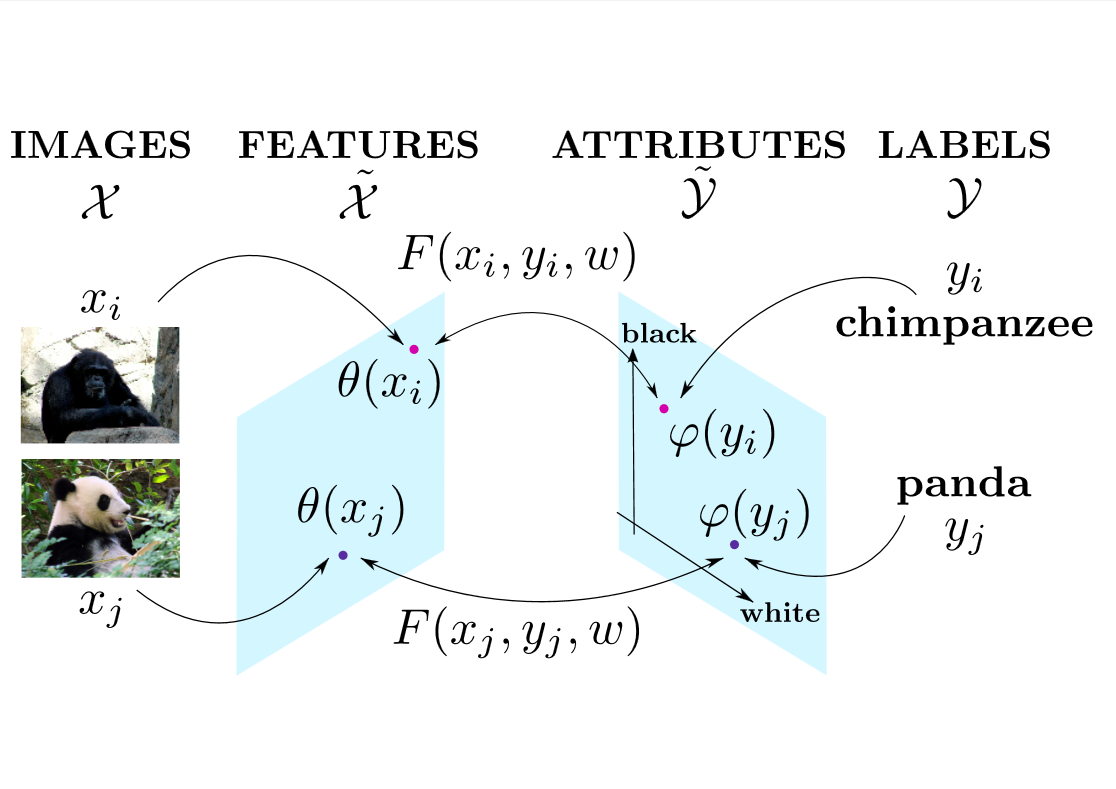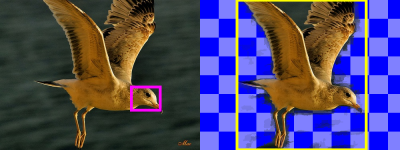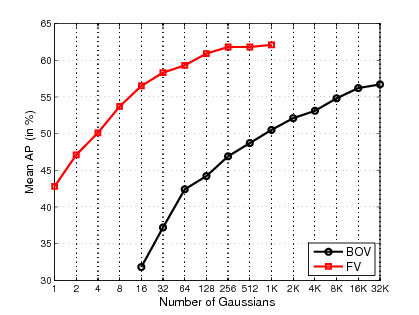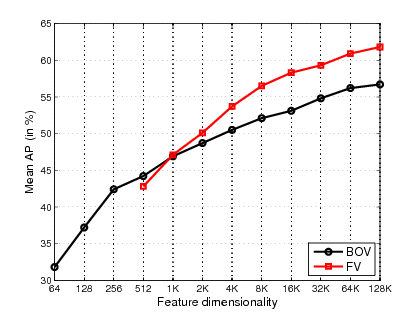Section: New Results
Visual recognition in images
Label-Embedding for Attribute-Based Classification
Participants : Zeynep Akata, Florent Perronnin, Zaid Harchaoui, Cordelia Schmid.
Attributes are an intermediate representation, which enables parameter sharing between classes, a must when training data is scarce. We propose in [13] to view attribute-based image classification as a label-embedding problem: each class is embedded in the space of attribute vectors. We introduce a function which measures the compatibility between an image and a label embedding, as shown in Figure 1 . The parameters of this function are learned on a training set of labeled samples to ensure that, given an image, the correct classes rank higher than the incorrect ones. Results on the Animals With Attributes and Caltech-UCSD-Birds datasets show that the proposed framework outperforms the standard Direct Attribute Prediction baseline in a zero-shot learning scenario. The label embedding framework offers other advantages such as the ability to leverage alternative sources of information in addition to attributes (e.g. class hierarchies) or to transition smoothly from zero-shot learning to learning with large quantities of data.
|
Good Practice in Large-Scale Learning for Image Classification
Participants : Zeynep Akata, Florent Perronnin, Zaid Harchaoui, Cordelia Schmid.
In this paper [2] , we benchmark several SVM objective functions for large-scale image classification. We consider one-vs-rest, multi-class, ranking, and weighted approximate ranking SVMs. A comparison of online and batch methods for optimizing the objectives shows that online methods perform as well as batch methods in terms of classification accuracy, but with a significant gain in training speed. Using stochastic gradient descent, we can scale the training to millions of images and thousands of classes. Our experimental evaluation shows that ranking-based algorithms do not outperform the one-vs-rest strategy when a large number of training examples are used. Furthermore, the gap in accuracy between the different algorithms shrinks as the dimension of the features increases. We also show that learning through cross-validation the optimal rebalancing of positive and negative examples can result in a significant improvement for the one-vs-rest strategy. Finally, early stopping can be used as an effective regularization strategy when training with online algorithms. Following these “good practices”, we were able to improve the state-of-the-art on a large subset of 10K classes and 9M images of ImageNet from Top-1 accuracy to .
Segmentation Driven Object Detection with Fisher Vectors
Participants : Ramazan Gokberk Cinbis, Jakob Verbeek, Cordelia Schmid.
In [18] , we present an object detection system based on the Fisher vector (FV) image representation computed over SIFT and color descriptors. For computational and storage efficiency, we use a recent segmentation-based method to generate class-independent object detection hypotheses, in combination with data compression techniques. Our main contribution is a method to produce tentative object segmentation masks to suppress background clutter in the features. As illustrated in Figure 2 , re-weighting the local image features based on these masks is shown to improve object detection significantly. We also exploit contextual features in the form of a full-image FV descriptor, and an inter-category rescoring mechanism. Our experiments on the VOC 2007 and 2010 datasets show that our detector improves over the current state-of-the-art detection results.
|
Image Classification with the Fisher Vector: Theory and Practice
Participants : Jorge Sánchez, Florent Perronnin, Thomas Mensink, Jakob Verbeek.
A standard approach to describe an image for classification and retrieval purposes is to extract a set of local patch descriptors, encode them into a high-dimensional vector and pool them into an image-level signature. The most common patch encoding strategy consists in quantizing the local descriptors into a finite set of prototypical elements. This leads to the popular Bag-of-Visual words (BOV) representation. In [10] , we propose to use the Fisher Kernel framework as an alternative patch encoding strategy: we describe patches by their deviation from a “universal” generative Gaussian mixture model. This representation, which we call Fisher Vector (FV) has many advantages: it is efficient to compute, it leads to excellent results even with efficient linear classifiers, and it can be compressed with a minimal loss of accuracy using product quantization. We report experimental results on five standard datasets – PASCAL VOC 2007, Caltech 256, SUN 397, ILSVRC 2010 and ImageNet10K – with up to 9M images and 10K classes, showing that the FV framework is a state-of-the-art patch encoding technique. In figure 3 we show a representative benchmark performance comparison between BOV and FV representations.





